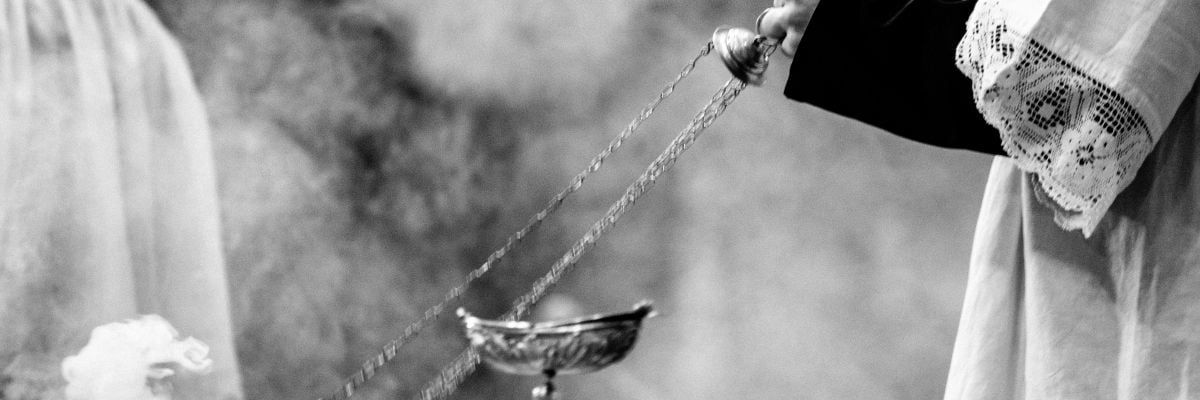
Question:
Answer:
Jesus Christ gave his Catholic Church the power to bind and loose (Matt. 16:18-19; 18:15-18), which includes liturgical disciplinary matters such as permitting or not permitting female altar servers. Consequently, because the Church has lawfully permitted female altar servers, we can concluded that girls or women who choose to be altar servers are not acting in disobedience toward Jesus.
In summary, the Church has permitted female altar servers since March 1994. The Holy See allowed bishops to establish policies on whether to allow female servers in their respective dioceses. However, in July 2001, the Congregation for Divine Worship and Discipline of the Sacraments (CDWDS) ruled that diocesan bishops could not oblige priests to implement a diocesan policy allowing for female altar servers. The Congregation’s response to a dubium (question) was published in Notitiae, the Church’s official publication regarding liturgical issues. The Protocol number of the Congregation’s letter is 2451/00/1 and is dated July 27, 2001.
Here’s a little background on this issue. In 1992, the Pontifical Council for Legislative Texts made an “authentic interpretation” of Canon 230 §2 of The Code of Canon Law, as it pertains to the use of female altar servers. Canon 230 §2 provides:
Lay persons can fulfill the function of lector in liturgical actions by temporary designation. All lay persons can also perform the functions of commentator or cantor, or other functions, according to the norm of the law.
The 1992 interpretation ruled in favor of allowing girl altar servers, but stated that further instruction was necessary. The Congregation for Divine Worship and the Sacraments issued the necessary instructions, etc., in a March 14, 1994 letter sent to bishops conferences throughout the world (Protocol number 2482/93). The texts of these statements were published in Origins, vol. 23, no. 45 (April 28, 1994). (Origins is a publication of the Catholic News Service for the U.S. Bishops
This letter from the Congregation states:
I feel obliged to clarify certain aspects of Canon 230 §2 and of its authentic interpretation: 1. Canon 230 §2 has a permissive and not a preceptive character: ‘Laici … possunt.’ [‘Laypersons…can.’] Hence the permission given in this regard by some bishops can in no way be considered as binding on other bishops. In fact it is the competence of each bishop, in his diocese, after hearing the opinion of the episcopal conference, to make a prudential judgment on what to do, with a view to the ordered development of liturgical life in his own diocese.
The letter explains that bishops may allow female altar servers, but are not obligated to do so, based on their pastoral assessment of their respective dioceses. The letter also explains that the laity do not have a “right” to serve at liturgical services, but are given “temporary deputation” to carry out such services.
In September 1995, on the eve of the Fourth World Conference on Women in Beijing, China, Pope John Paul II affirmed the decision by the Congregation for Divine Worship:
The 1987 synod on the laity expressed precisely this need and asked that “without discrimination women should be participants in the life of the Church and also in consultation and the process of coming to decisions” (Proposition 47; cf. Christefideles Laici, 51).
This is the way to be courageously taken. To a large extent, it is a question of making full use of the ample room for lay and feminine presence recognized by the Church’s law. I am thinking, for example, of theological teaching; the forms of liturgical ministry permitted, including service at the altar; pastoral and administrative councils; diocesan synods and particular councils; various ecclesial institutions; curias and ecclesiastical tribunals; many pastoral activities, including the new forms of participating in the care of parishes when there is a shortage of clergy, except for those tasks that belong properly to the priest. Who can imagine the great advantages to pastoral care and the new beauty that the Church’s face will assume when the feminine genius is fully involved in the various areas of her life? (Pope John Paul, “Vatican Delegation in Beijing,” Origins, vol., 25, no. 13 (Sept. 14, 1995), nos. 1-2, p. 203; emphasis added).
As noted, though, the CDWDS ruled in 2001 that a bishop could not oblige his priests to use female altar servers. The provision of the CDWDS’ 2001 letter includes the following:
In accord with the above-cited [1994] instructions of the Holy See, such an authorization may not, in any way, exclude men or, in particular, boys from service at the altar, nor require that priests of the diocese would make use of female altar servers, since “it will always be very appropriate to follow the noble tradition of having boys serve at the altar” [Circular Letter to the Priests of the Episcopal (bishops) Conferences, March 15, 1994, no. 2]. Indeed, the obligation to support groups of altar boys will always remain, not least of all due to the well-known assistance that such programs have provided since time immemorial in encouraging future vocations [cf. Ibid.].
With respect to whether the practice of women serving at the altar would truly be of pastoral advantage in the local pastoral situation, it is perhaps helpful to recall that the non-ordained faithful do not have a right to service at the altar; rather, they are capable of being admitted to such service by the sacred pastors (cf. Ibid., no. 4, [and other notes, including a reference to the interdicasterial Instruction Ecclesiae De Mysterio, August 15, 1997, number 4]. Therefore, in the event that your excellency found it opportune to authorize such service of women at the altar, it would remain important to explain clearly to the faithful the nature of this innovation, lest confusion might be introduced, thereby hampering the development of priestly vocations.



